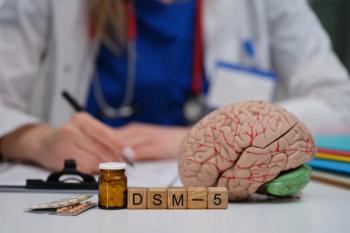
- Vol 39, Issue 11
Lithium: Cardiac Adverse Effects and When to Get an ECG
When should you monitor electrocardiograms in patients taking lithium?
BIPOLAR UPDATE
A recent consultation motivated an evaluation of the evidence on when one should monitor electrocardiograms (ECGs) in patients taking
In what appears to be the most thorough review of the subject, Mehta and Vannozzi proposed that, though data are limited, routine monitoring of ECGs seems unnecessary. However, if patients are maintained on or develop high lithium levels (eg, 1.2 mEq/L or higher), then the risks of arrhythmias, ST segment changes, and QRS prolongations become significant, and a baseline ECG and periodic repeats are worth doing.3 They also noted that lithium-induced ECG changes are more likely over the age of 60 years. This population has a high prevalence of ischemic
In reviewing the literature since this “complete” literature search (as the authors described it), we only found case reports. In the most recent one, a 52-year-old woman with a complex medical presentation including fever and sepsis had been taking lithium for 10 years. Her ECG showed a wide range of abnormalities that, after excluding other factors, seemed mostly due to lithium as they were present even when her medical problems had resolved.4 There was atrial fibrillation acutely when her lithium level was 2.0 mEq/L (also found in some case reports in the Mehta and Vannozzi review and in another recent case report5), but this converted rapidly when the lithium level came down to normal. Six months later, with normal lithium levels, the patient still had ST segment elevation and inverted T waves. The report’s authors concluded that unpredictable genetic and
In summary, it seems that although there are no standardized, officially approved guidelines for serial ECG monitoring with lithium, we probably should be getting more baseline ECGs and repeating them more frequently in patients on long-term lithium and in those who develop cardiac risk factors. Consultation with our cardiology colleagues on any abnormal findings would be prudent.
Dr Osser is an associate professor of psychiatry at Harvard Medical School in Boston, Massachusetts, and codirector of the US Department of Veterans Affairs National Bipolar Disorder Telehealth Program in Brockton, Massachusetts. The author reports no conflicts of interest concerning the subject matter of this article.
References
1. Schou M. Lithium Treatment of Manic-Depressive Illness: A Practical Guide. 3rd ed. Karger; 1986:33.
2. Taylor DM, Barnes TRE, Young AH. The Maudsley Prescribing Guidelines in Psychiatry. 14th ed. Wiley Blackwell; 2021:251.
3. Mehta N, Vannozzi R.
4. Diserens L, Porretta AP, Trana C, Meier D.
5. Maddala RNM, Ashwal AJ, Rao MS, Padmakumar R.
Articles in this issue
almost 3 years ago
Covering the Basics: LGBTQ+ Terminologyalmost 3 years ago
The Importance of Avoiding Implicit Bias in Advocating for Patientsalmost 3 years ago
Psychiatrist Humility and Patient Empowermentalmost 3 years ago
Advances and Challenges in Adult ADHDalmost 3 years ago
THE QUEST: Nepal Lets You Reach for the Majesty of the Summitalmost 3 years ago
Psychiatric Times™ Conference: Clinical Pearls for Treating MDDNewsletter
Receive trusted psychiatric news, expert analysis, and clinical insights — subscribe today to support your practice and your patients.














